Коронавирус и ополаскиватели для рта
 chuka_lis — 18.02.2022
Разносторонняя совместная работа ученых из США и ВБ.
chuka_lis — 18.02.2022
Разносторонняя совместная работа ученых из США и ВБ.Они определили, что суперкапсид (липидная мембрана сверху капсида) коронавируса, хоть он и "вылупляется" из человеческой клетки, по липидному составу все же отличается от ее мембраны. Мембрана вируса состоит, преимущественно, из фосфолипидов (много фосфатидилхолина, фосфатидилэтаноламина, фостфатидининозитола, которые считаются "прокоагулянтными"), и там мало сфинголипидов и холестерола и др липидов, доминирующих в клеточных мембранах. Так же в ней больше фосфатидилсерина и других прокоагулянтных аминофосфолипидов. Мембрана вируса больше похожа на эндоплазматический ретикулум и внутреннюю мембрану клетки. В отличие от клеточной, вирусная мембрана "несимметричная".
Такой ее состав обеспечивает ее повышенную "липкость", потому вирусу проще "приставать", особенно к активированным клеткам, в мембранах которых становится больше фосфатидилсерина (тромбоциты). Потому вирусные частицы, когда они в крови, способствуют коагуляции, и процессы "свертывания" происходят гораздо быстрее. Так же, "липучая" мембрана помогает вирусам и проникать в клетки.
Авторы решили проверить, на сколько ополаскиватели для рта, содержащие сурфактанты, или поверхностно активные вещества, могут помочь избавиться от коронавируса. Несколько ополаскивателей, содержащих вещества, облегчающие "смывание фософолипидов", проверили на культурах клеток и так же, проверяли, как выделялся вирус в мазках, когда полоскателями пользовались госпитализированные больные с ковидом. Полоскать горло-рот надо было 30 секунд, а мазки брали до полоскания, и через 1, 15, 30 и 60 минут после. Вообще, в принципе, работали все выбранные ополаскиватели кроме хлоргексидина. Но лучше всех показали себя цетилперидиниум хлорид и этил лауройл аргинат. Оба являются безрецептурными, и продаются: Listerine Advanced Defence Gum Treatmen и Dentyl Fresh Protect. После полоскания ними коронавиурс пропадал и его не было в зараженных культурах клеток, и в мазках (слюне) у больных минимум час после полоскания. Полоскатель SCD Ultra, тоже содержащий цетилперидиннум хлорид, уменьшил количество коронавируса в мазке в 1000 раз (но неполностью, как предыдущие, похоже, мешал находящийся в составе бензоат). Примерно во столько же раз снизил и листерин, содержащих растительные масла, тк он содержал тимол (самый эффективынй в этом отношении из них, как показал экспперимент на культуре). Работал, как полоскатель, даже Normasol (это физраствор, хлорид натрия) по снижению вируса в мазках, но только через час после полоскания. Раствор йода Videne, увы, не показал редуцирующего эффекта. Однако, у него может быть другой механизм действия (не смывать,а снижать выделение или еще что).
The lipid envelope of SARS-CoV2 is an essential component of the virus, however its molecular composition is unknown. Addressing this knowledge gap could support the design of anti-viral agents, and further understanding of viral interaction with extracellular host proteins, infectivity, pathogenicity, and innate immune system clearance. Lipidomics analysis of SARS-CoV2 particles generated from Vero or A549 cells revealed that the virus envelope comprised mainly of phospholipids (PL), primarily phosphatidylcholine (PC), phosphatidylethanolamine (PE) and phosphatidylinositol (PI), with very little cholesterol, sphingolipids or other lipids, indicating significant differences from host membranes. Unlike healthy cellular membranes, procoagulant aminoPL (aPL), specifically PE and phosphatidylserine (PS), were present on the external side at levels far exceeding those seen on activated platelets. As a result, purified virions directly promoted coagulation. To investigate whether these differences enabled the viral envelope to be selectively targeted at relevant sites in vivo, we tested whether non-toxic oral rinses containing lipid disrupting chemicals could reduce viral infectivity. Products containing PL-disrupting surfactant solutions (cetylpyridinium chloride (CPC) or ethyl lauroyl arginate) met EN14476 virucidal standards in vitro, however products containing essential oils, PVP-I, or Chlorhexidine did not, nor did rinses containing components that altered the critical micelle concentration of CPC. This result was recapitulated in vivo, where a 30-second oral rinse with CPC-mouthwash eliminated live virus in the oral cavity of COVID19 patients for at least 1hr, while PVP-Iodine and saline mouthwashes were ineffective. Thus, the SARS-CoV2 lipid envelope is distinct from the host plasma membrane which may enable design of selective anti-viral approaches, it exposes PE and PS which may influence thrombosis, pathogenicity, and inflammation, and can be selectively targeted in vivo by specific oral rinses.
Coronaviruses bud from the endoplasmic reticulum/Golgi intermediate complex (ERGIC) and exit via lysosomal secretion (3-8), thus the composition of the virion envelope may differ significantly from plasma membrane, enabling selective therapeutic targeting that avoids damaging host membranes (9). Furthermore, the envelope is not simply a structural component of the virion, with lipids themselves being potent bioactive molecules. Mammalian cells maintain aminophospholipids (aPL), such as phosphatidylethanolamine (PE) and phosphatidylserine (PS), in their inner plasma membrane leaflet using energy-dependent enzymes, however these control mechanisms are not present in the virus. This raises the possibility that the external face is enriched in PE and PS, which are highly pro-thrombotic, and furthermore could directly promote virion uptake via apoptotic cell mimicry (10-16). Indeed, a recent study showed that PS is present on the surface of the virions and that PS receptors on host cells can support entry (17). However, that study relied on an ELISA method and neither the amounts nor the molecular species of PS exposed were demonstrated, nor was the presence of PEshown. Phospholipids (PL) such as lysophospholipids and sphingolipids/ceramides are proinflammatory effectors (18, 19), and can interact with complement to promote a pro-inflammatory environment (3, 11, 20), while lysophospholipids signal through G-protein coupled receptors causing immune cell migration and apoptosis (21-24). Understanding virion lipid composition therefore has potential to inform our understanding of virus pathogenesis, dissemination, and how the virion promotes transition from early infection to severe inflammatory thrombotic COVID19.
Following on from public health advice on handwashing, which disrupts the lipid envelope, we considered whether similar approaches using formulations that are non-toxic in vivo could represent potential anti-viral strategies directed at reducing SARS-CoV2 transmission, and published an evidence review on this topic in 2020(25). The lipid membranes of enveloped viruses, including some coronaviruses had previously been shown to be sensitive to disruption by lipidomimetic agents and surfactants(25). Thus, we hypothesised that the SARS-CoV2 virus might also be susceptible to inactivation by components in widely-available oral rinses, such as ethanol/essential oils,cetylpyridinium chloride (CPC) and povidone-iodine (PVP-I)(25). If lipid-disrupting components in oral rinses can dissolve the virion envelope, this approach could in theory reduce the risk to healthcare workers or carers treating individuals asymptomatically (or symptomatically) carrying the virus. Early in the pandemic, mouthwashes were employed empirically in outbreaks in China but without evidence of efficacy (26)
The SARS-CoV2 envelope from Vero or A549 cells is phospholipid (PL) rich and varies depending on cellular origin.
Viral lipid extracts were analysed using lipidomics, including targeted (virus from both cell types) and untargeted (Vero cell virus only) to provide a comprehensive map of molecular composition and abundance. First, targeted LC/MS/MS was used to analyse ~500 individual molecular species, in triplicate for each cell type. Across the two separate preparations (Vero vs A549), ~260 lipids were reproducibly detected.
Overall, the virus envelope was primarily comprised of PL from several categories, with the most abundant for both preparations being phosphatidylcholine (PC), phosphatidylethanol (PE) and phosphatidylinositol (PI), along with their respective lyso, and ether/plasmalogen forms. Ether/plasmalogen PEs were relatively abundant when compared with acylPEs. Smaller amounts of phosphatidylserine (PS) and phosphatidylglycerol (PG) were seen. There was a low abundance of other lipids such as sphingolipids, including sphingomyelin (SM), ceramide (Cer), dihydroceramides (DHCer), and also cholesteryl esters (CE), triacylglycerides (TAG) and free cholesterol.
The SARS-CoV2 membrane contains low amounts of cholesterol, SM and PS, relative to other PL. This indicates that the membrane is virtually devoid of cholesterol, in combination with a high PL content. Additionally, the mol% of SM and PS are relatively low (Table 1). Overall, the data characterises SARS- CoV2 as a membrane highly enriched in PL, primarily PE, PC and PIб but with rather low levels of cholesterol, PS and SM. They also show that the membrane is influenced to some extent by the host cell of origin in relation to specific molecular species of lipids detected.
The SARS-CoV2 lipid membrane external leaflet is unable to maintain asymmetry of phosphatidylethanolamine (PE) and phosphatidylserine (PS).
Thus, considering the total virus levels of PE and PS , with the proportions detected externally, these particles will expose some external facing PS, along with very high levels of external PE, far higher than would be present on platelets during physiological or pathological haemostasis.
Given the key role of external facing PE and PS in together supporting blood clotting, we next tested whether virus could regulate the ability of plasma to coagulate in vitro. Virions dramatically reduced the time taken for clot formation in a concentration dependent manner, at minimum concentrations of ~6x10(5) PFU/ml (Figure 4 B). Although data is not available on blood virus levels in severe disease, we note that the levels able to enhance clot formation are well within the range of levels detected in saliva, BAL and subglottic aspirates in patients, who frequently carry loads of 10(6)-10(7), and can even be above 10(8) PFU/ml (42).
Having characterised the envelope composition, we next investigated whether it was possible to disrupt the lipid envelope using oral rinses that have been designed to be antimicrobial, but also contained constituents potentially capable of targeting generic PL based membranes. To define biological activity, we assessed viral infectivity in vitro, in the presence of a soil load to mimic the components of the nasal/oral cavity. To examine the activity of a range of products, seven formulations were tested (Table 2) including rinses containing cetylpyridinium chloride (CPC, Dentyl Dual action, Dentyl Fresh Protect, SCD Ultra), chlorhexidine (Corsodyl), ethanol/ethyl lauroyl arginate 228 (LAE) (Listerine®Advanced Defence Gum Therapy), ethanol/essential oils (Listerine®Cool Mint) and povidone iodine (Videne). The impact of a 30 second exposure of virus to rinse formulation wasassessed by plaque assay.
the ability of mouthwash to reduce virus infectivity, after a 30-second exposure in a soil load, was tested using the optimised plaque assay. Two CPC-containing mouthwashes (Dentyl Dual Action, Dentyl Fresh Protect) and a mouthwash containing 23% v/v ethanol/LAE (Listerine® Advanced DGT) eradicated the virus completely, giving >5-log10 reduction in viral titres, and thus met EN14476 as a virucide. In contrast, only moderate effects (~3-log fold reduction) were observed with PVP-I (Videne), CPC/sodium citric acid/benzoate (SCD Ultra) and 21 % v/v alcohol/essential oils (Listerine® Cool Mint) (Figure 4 E), which failed to meet EN14476. Chlorhexidine (Corsodyl; <2 log fold reduction) was least effective.
Oral rinse formulations exhibit differential selectivity in virus- and host cell inactivation.
We compared the sensitivity of VeroE6 cells with SARS-CoV2 virions, to dilutions of the two formulations showing the highest efficacy – i.e. CPC(Dentyl Fresh Protect) or ethanol/LAE (Listerine®Advanced DGT) following 30 second exposure in the presence of soil load (Figure 4 F). In vitro cell toxicity varied 8-fold between the virucidal mouthwashes (Dentyl Fresh Protect and Listerine® Advanced DGT). Listerine® Advanced DGT showed higher selectivity for virus over cultured cells than Dentyl Fresh Protect, as shown by calculated IC50s (Figure 272 5 A) which was approximately 2 times more potent at inactivating virus (Figure 4 F). Thus, while neither product demonstrated a high selective index for virus versus cells, the SARS-CoV2 envelope lipid composition may, in principle, enable selection of more targeted formulations with lower impact on host cells.
Surfactants in oral rinses provide the strongest antiviral effects.
CPC, the active component in Dentyl Fresh Protect, eradicated live virus at both concentrations tested (Figure 5 B). Dentyl Dual Action contains CPC/isopropyl myristate (IPM) in a biphasic aqueous-oil system that requires shaking before use. CPC is predominantly in the aqueous phase, while IPM is predominantly in the oil layer. The fully-shaken rinse completely eradicated live virus (Figure 5 B). The aqueous CPC layer (without prior mixing) was also effective, as was the aqueous layer obtained after shaking followed by 2 min settling (to ensure IPM saturation of the CPC layer)). Thus, CPC alone can eradicate SARS-CoV2 and IPM isn’t required.
Listerine®Advanced DGT contains ethanol at 23 % v/v and LAE (3.3 mM), while other formulations (e.g. Listerine®Cool Mint) contain ethanol with essential oils: thymol, menthol and eucalyptol. Whilst 23 % v/v ethanol alone had no consistent impact, the addition of thymol (5 mM) resulted in a 3-log reduction in virus titres (Figure 5 B). This indicates that Listerine®Cool Mint reduces virus titres due to the essential oils, with ethanol mainly providing oil solubility. Aqueous solutions of LAE below (3.3 mM) and above (9.9 mM) the critical micelle concentration (cmc, 4.9 mM (43)), completely eradicatedSARS-CoV2, mirroring the potent anti-viral activity of Listerine® Advanced DGT, which contains 3.3 mM LAE (Figure 5 B). This was seen with or without 23 % ethanol inclusion, indicating that LAE is responsible for the antiviral activity of this product. To determine the potential effect of charge on molecular interactions with the viral lipid membrane, in addition to CPC and LAE (cationic surfactants), the effect of the anionic surfactant dodecylbenzensulfonate (DBS) was tested and found to completelyeradicate infectivity (Figure 5 B).
One mouthwash (SCD Ultra) showed only a 3-log reduction in virus titres despite containing CPC(Figure 4 E). This formulation also contains citrate and benzoate. When these were separately added to CPC, citrate had no effect, however benzoate reduced the ability of CPC to kill virus (Figure 5 C). Therefore, while surfactants such as CPC are essential for antiviral activity, additional components may dampen effectiveness in inactivating SARS-CoV2.
CPC-containing mouthwashes reduce the salivary viral load of SARS-CoV2 in COVID 19 patients.
randomised clinical trial was undertaken to measure the antiviral efficacy of mouthwashes following a 30 second rinse. 78 hospital in-patients with PCR-diagnosed COVID 19 were recruited
Amongst patients with 319 live virus, saliva was collected before rinsing (baseline), and at 1-, 15-, 30-, and 60-minutes post-320 rinsing, with mouthwashes containing either containing CPC/IPM (Dentyl Dual Action, n = 8), CPC/benzoate (SCD Ultra, n = 7), PVP-I (Videne, n = 6) or 0.9% w/v NaCl (Normasol, n = 6). Data isshown as both log2-fold reduction from baseline (Figure 5 D) and as individual patient data (Figure 6). Across the entire cohort, baseline salivary viral load varied widely, from 120 PFU/ml to 2.8 x 10(7) PFU/mL (Supplementary Data1.xls). All four mouthwashes reduced salivary viral load 1-minute post- rinsing, with the smallest reduction being from Normasol® (median 3.9 log2 fold reduction from baseline) and the largest Dentyl Dual Action where 6/7 patients recorded no live virus (median 14.3 log2 reduction from baseline). The persistence of the effects varied with rinse. No significant reduction in salivary viral load was seen with Videne at any of the time-points, while for Normasol® a significant reduction was apparent only at 60 minutes. For SCD Ultra, a significant 330 reduction in viral load was seen at 1 minute only (median 8.9 log2 reduction from baseline ). Dentyl Dual Action was the only product to demonstrate a persistent effect, with a significant 332 reduction evident throughout at 1, 15, 30 and 60 minutes respectively (medians 14.3, 11, 8.8, 9, log2 reduction from baseline). Impressively, in 3/8 patients treated with Dentyl Dual Action, no live virus was recovered at any timepoint after the initial rinse.
In the mammalian plasma membrane, cholesterol is often concentrated in specialised regions which support receptor dependent signalling, called lipid rafts(46). Our data suggest these will be absent from the viral envelope. Furthermore, the cholesterol in plasma membranes regulates fluidity and reduces permeability to small molecules, while SM is also important for reducing fluidity(47-49). Thus, the viral envelope and plasma membrane will be very different biophysically. Similarly, bacterial membranes are also considered to be devoid of cholesterol. In this context, this is exploited therapeutically since cholesterol protects host cells from disruption by anti- microbial peptides which directly insert in the bacterial membrane
Furthermore, we demonstrate that the virion membrane contains lysoPL, from PG, PI, PE and PC, noting that these are known bioactive lipid signalling mediators, and their presence in the envelope could impact on host inflammatory responses to infection. It was recently reported that coronaviruses exit via lysosomal secretion instead of the biosynthetic secretory pathway(51). Lysosomes containhigh levels of SM and cholesterol (Tabel 1), thus the lack of these lipids indicates that lysosomal passage of virus doesn’t appear to impact envelope composition.
Notably, we found significant differences in SARS-CoV2 virus lipids, depending on the host cell in which they were generated. This may relate to subtle differences in host cell ER membranes between the cell types. Importantly, inflammation has a significant impact on host cell lipid metabolism, and how this influences virion envelope composition now needs to be tested.
Here, we showed that SARS-CoV2 exposes around 50% of its total molecular species of aPL on the 380 surface of the particle. because PE and PS promote coagulation, complement binding and uptake of apoptotic cells through their electronegative interactions with Ca2+ ions and various proteins (3, 20, 40). Although the overall amounts of PS appear to be rather low in virions, PE levels are similar to plasma membrane (Table 1). Thus, exposure of 50 % of aPL on the surface willresult in levels of external PE that are around 12-fold-higher than activated platelets(40). Indeed, in line with this, we found that purified virions significantly accelerate plasma coagulation in vitro. In summary, our study and others suggest that targeting aPL could support anti-thrombotic, anti-inflammatory or anti-viral strategies for COVID19.
|
|
</> |

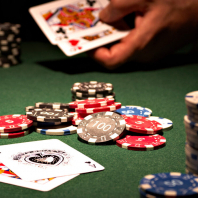 Gizbo Casino: территория азарта и безопасного гемблинга. Детальный анализ игр, бонусов и особенностей популярной онлайн-площадки
Gizbo Casino: территория азарта и безопасного гемблинга. Детальный анализ игр, бонусов и особенностей популярной онлайн-площадки  снова катаклизма
снова катаклизма  Закономерность трагедии
Закономерность трагедии  традиционный завтрак 131
традиционный завтрак 131 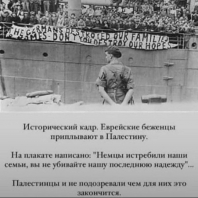 МИД Израиля пригрозил Эрдогану, что тот может повторить судьбу Саддама Хусейна
МИД Израиля пригрозил Эрдогану, что тот может повторить судьбу Саддама Хусейна 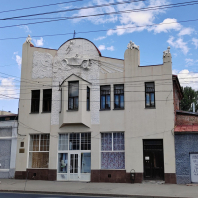 Гараж Иванова. Саратов
Гараж Иванова. Саратов 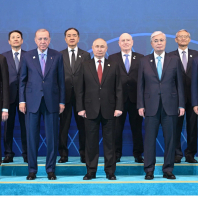 О важном изменении в поведении Путина И это говорит о многом?
О важном изменении в поведении Путина И это говорит о многом?  Россиянка побывала в США и описала свои впечатления "Это не рай!"
Россиянка побывала в США и описала свои впечатления "Это не рай!" 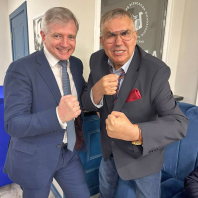 Бред сумасшедшего
Бред сумасшедшего 



